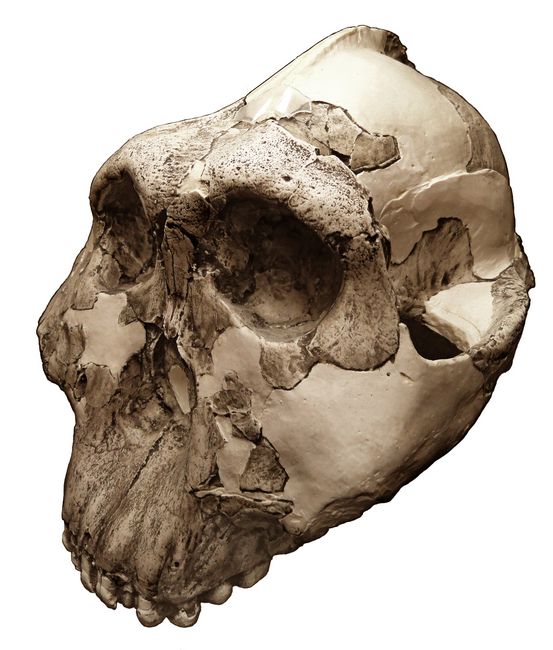Athena Review Image Archive ™
Zinjanthropus skull

Skull of Zinjanthropus or Australopithecus boisei (YPM cast; photo: Athena Review)
Zinjanthropus is an early hominin from East Africa, first discovered at Olduvai Gorge in Tanzania in 1959 by Mary Leakey, dating from the Early Pleistocene at about 2.0 mya. The name Zinjanthropus ("nutcracker man") was coined due to the massive jawbones and teeth of this individual.
The holotype skull (OH-5) was originally classified by Louis Leakey (1959) as Zinjanthropus boisei ("nutcracker man from the woods"), but is now reclassified as Paranthropus or Australopithecus boisei, a more massive relation of Australopithecus robustus, first discovered by Robert Broom in South Africa.
Brain size or cranial capacity was about 450–550 cc, similar to that of other australopithecines. Some skulls are markedly smaller than others, which is taken as evidence of sexual dimorphism where females are much smaller than males. This skull has a sagital crest, providing an attachment for the large jaw muscles. This is more pronounced in male skulls, another trait of sexual dimorphism such as also seen in present-day gorillas, orangutans, and chimpanzees.
.
References:
Leakey, L. S. B. (1959). "A new fossil skull from Olduvai." Nature 185 (4685).
Copyright © 1996-2020 Rust Family Foundation (All Rights Reserved).